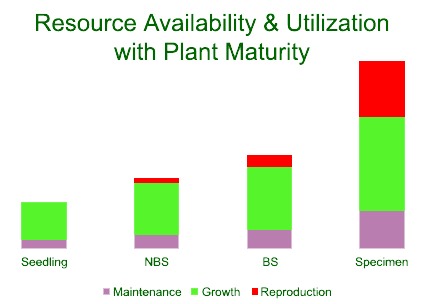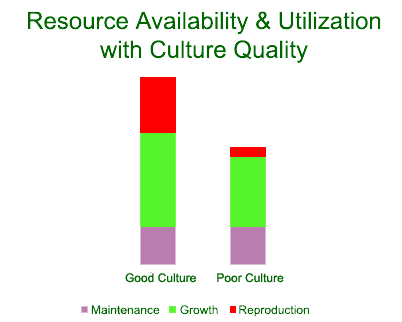
It is not unusual for a relatively new grower to ask, “How can I make plants bloom?“. The correct answer is that we don’t “make” them bloom at all! Instead, we must do what we can to “let” them do so.
It’s useful to think of blooming in term of two things: the plant’s capacity to bloom and its ability to do so.
A plant’s capacity to bloom is genetic, including flower size, shape, color, conformation, flower count, etc. If the culture is correct in every way, a plant will bloom to its genetically-programmed maximum extent. There is nothing that can be done to force it to do more than that. On the other hand, the ability of the plant to reach that level is cultural in nature, and that is where we must focus our attention, knowing that any shortcomings on our part will detract from it.
Reaching that maximum blooming capacity has much to do with how well the plant can acquire, create and store nutrient and energy reserves in quantities that allow it to comfortably expend them on the blooming process. An immature plant simply does everything it can to grow and reach sexual maturity, dedicating almost all its acquired stores to growth and maintenance, with little held in reserve. That may be why seedlings are so sensitive to changes in their culture, declining rapidly if something goes awry.
As it grows, even a relatively immature plant still dedicates much of the absorbed nutrients and photosynthesized “fuel” to putting on more growth and maintaining existing tissues, but having more mass and more storage volume, there might be enough excess in the stronger individuals to “go for it” with a few flowers – hence the occasional “precocious” plant in a group of siblings.
In a mature plant – one with more leaf pairs in the case of a monopodial, or a greater number of growths in a “colony“ of sympodial plants – a much larger amount is dedicated to collecting, producing and storing nutrients and fuel, relative to the amount of new growth that is added, while only consuming a small amount to stay alive and functioning. That leaves more “surplus” that can be safely utilized for blooming. It is no coincidence that large “specimen” plants bloom so well and are often awarded. The following is a graphical representation of those concepts:

Those scenarios demonstrate the impact of plant maturity, but culture certainly plays a role as well.
All the “acquisition” and “expenditures” of resources are chemical processes that can be affected by cultural parameters such as light levels, temperature, water and nutrient supplies, humidity and air movement. As they are “niche plants”, orchids have relatively narrow genetically-programmed “ideals” for all cultural parameters, so missing the mark for any of them – higher or lower – can affect the rates of those processes and do so independently of each other, slowing some while accelerating others. Such disparities can have significant implications to the net collection and use of reserves that can be “spent” on blooming.

This may provide some insight into the performance of one plant versus another when grown side-by-side, and why two growers have differently performing plants, even if they are the same clone. The practical upshot of all of this is that, to “make plants bloom”, one must understand their individual specific needs, and provide those well and consistently. Doing so gives the plants the opportunity to acquire adequate reserves and utilize them optimally.
